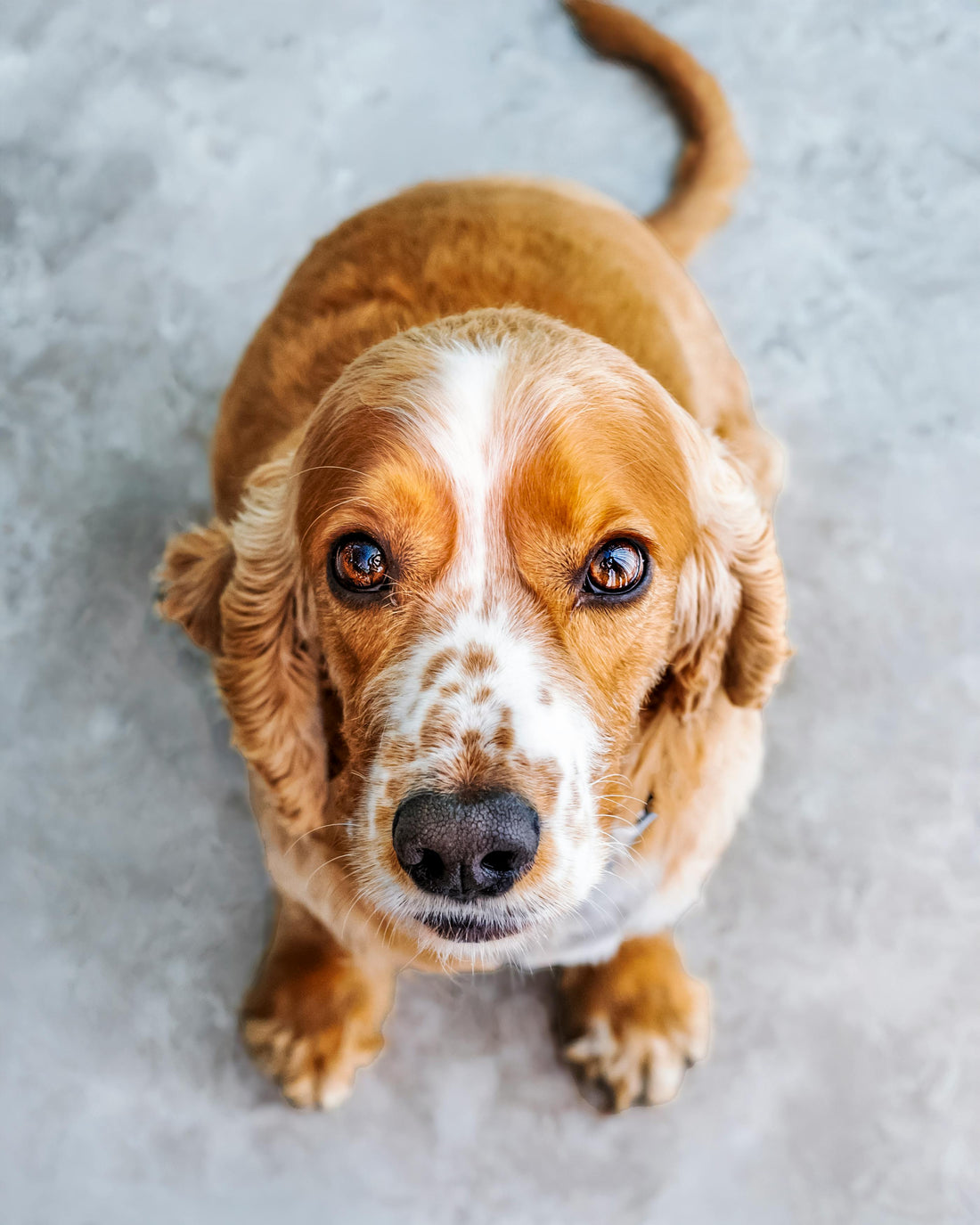
Beyond the Bad Breath: A Comprehensive Guide to Cleaning Your Dog's Teeth
Share
As loving pet parents, we're meticulous about our dogs' diets, exercise, and vet visits. Yet, one critical aspect often gets overlooked until there's a problem: their dental health. That persistent "doggy breath" isn't just unpleasant; it's often the first sign of dental disease, a silent epidemic affecting up to 80% of dogs by age three. The good news? Regular dental care at home, combined with professional cleanings, can significantly extend your dog's healthy, happy life.
Let's dive into becoming an expert at keeping those canine canines sparkling!
Why Dental Care is Non-Negotiable
Just like in humans, plaque, a sticky film of bacteria, constantly forms on your dog's teeth. If not removed, it hardens into tartar, which irritates the gums, leading to:
-
Gingivitis: Inflammation of the gums, causing redness, swelling, and bleeding.
-
Periodontal Disease: If gingivitis progresses, it damages the structures supporting the teeth, leading to pain, tooth loss, and infection.
-
Systemic Health Issues: Bacteria from severe dental disease can enter the bloodstream, affecting vital organs like the heart, kidneys, and liver.
Ignoring dental hygiene isn't just about bad breath; it's about protecting your dog's overall health and comfort.
Your At-Home Arsenal: The Right Tools
Before you begin, gather your supplies:
-
Dog-Specific Toothpaste: NEVER use human toothpaste. It contains ingredients like fluoride and xylitol that are toxic to dogs. Pet toothpastes come in appealing flavors (poultry, beef, peanut butter) and are safe for ingestion.
-
Dog Toothbrush: These come in various designs:
-
Finger Brushes: Slip over your finger, offering a gentle introduction and direct control.
-
Long-Handled Brushes: Often have multiple brush heads designed to reach different angles.
-
Gauze Pad/Finger Wrap: A good starting point for puppies or highly resistant dogs, offering a gentle abrasive surface.
-
-
Positive Reinforcement (Treats!): This is your most powerful tool. Make the experience positive with praise and rewards.
The Step-by-Step Guide to Brushing Your Dog's Teeth
Patience is key. Start slow, especially if your dog isn't used to mouth handling.
Step 1: Introduction (Days 1-3)
-
Start by simply letting your dog lick a tiny bit of dog-specific toothpaste off your finger. Praise and reward. Do this daily for a few days to associate toothpaste with something positive.
Step 2: Acclimatization (Days 4-7)
-
Once they're happy with the toothpaste, put a small amount on your finger and gently rub it along their outer gums and teeth for a few seconds. Focus on the canine teeth and the large molars at the back, as these are common areas for plaque buildup. Don't worry about the inner surfaces initially. Keep it brief, positive, and reward generously.
Step 3: Introducing the Brush (Week 2)
-
Once they tolerate your finger, put toothpaste on the actual dog toothbrush or finger brush. Gently lift their lip and brush for a few seconds using small, circular motions, focusing on the outer surfaces of the teeth. Again, praise and reward.
-
Goal: Aim for 30 seconds per side, gradually increasing over time.
-
Frequency: Ideally, daily. If not, every other day is a good goal.
Tips for Success:
-
Choose the Right Time: Pick a time when your dog is relaxed, perhaps after a walk or a play session.
-
Positive Association: Always end the session with praise, a favorite toy, or a special treat. Never make it a punishment.
-
Focus on the Outside: Most dental disease occurs on the outer surfaces of the teeth, so focus your efforts there. Don't worry too much about the inner surfaces initially, as their tongue often helps clean those.
-
Consistency: Daily brushing is most effective, but even 3-4 times a week is vastly better than nothing.
Beyond Brushing: Supplemental Dental Care
While brushing is the gold standard, other methods can help:
-
Dental Chews: Look for dental chews with the VOHC (Veterinary Oral Health Council) Seal of Acceptance. This means they've been scientifically proven to help reduce plaque and/or tartar.
-
Dental Diets: Certain prescription dental diets are designed with unique kibble shapes and textures that help scrape plaque off teeth as your dog chews.
-
Water Additives: Some veterinarians recommend water additives that help reduce bacteria in the mouth.
-
Professional Dental Cleanings: Even with diligent home care, most dogs will eventually need a professional dental cleaning performed by a veterinarian under anesthesia. This allows for thorough scaling (above and below the gum line), polishing, and extraction of any diseased teeth. Your vet will advise you on the appropriate frequency based on your dog's oral health.
Dog Dad ceramic Mug
https://thesoulfulhomeshop.com/es/products/dog-dad-ceramic-mug-11oz-15oz
When to Seek Professional Help
If you notice any of these signs, consult your veterinarian immediately:
-
Excessive bad breath
-
Red, swollen, or bleeding gums
-
Yellow or brown tartar buildup
-
Loose or missing teeth
-
Reluctance to eat, especially hard food
-
Pawing at the mouth or drooling excessively
Caring for your dog's teeth is a testament to your love and commitment to their well-being. By integrating these simple yet crucial habits into your routine, you'll ensure your furry companion not only enjoys fresher breath but also a healthier, happier, and longer life by your side. Now go forth and brush those pearly whites!
Photo by Christopher Welsch Leveroni
